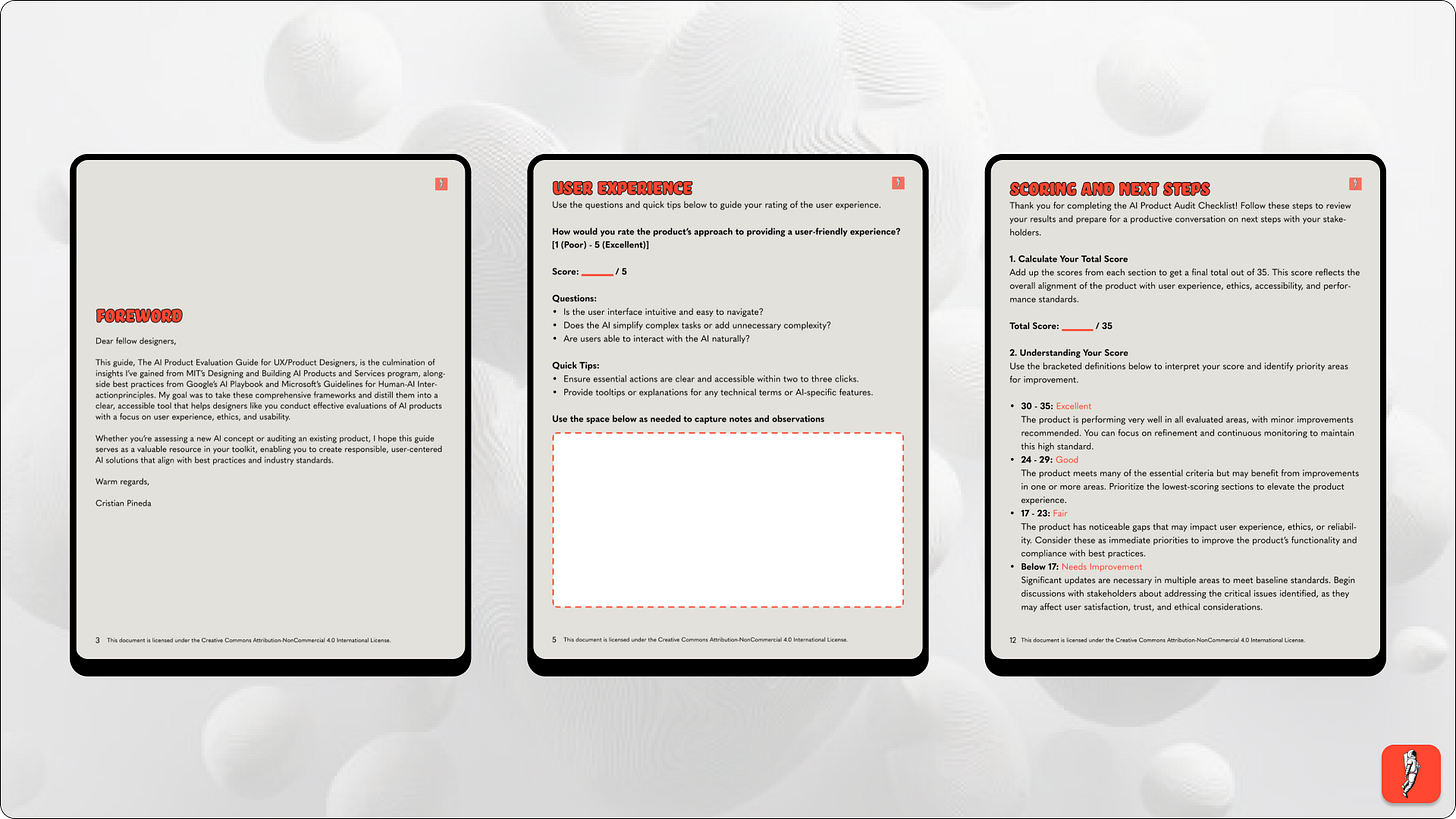5 Cognitive Biases That Can Make or Break Your Product (Free AI Evaluation Guide Included)
Learn 5 key cognitive biases every UX designer should know, essential tips for ethical AI design, and get your free AI Product Evaluation Guide—a must-have tool for responsible product assessment.
Welcome to this week’s issue of Cristian Talks Product Design! I don’t know about you, but for me this past week has been a bit of a roller coaster—from keeping up with the elections to navigating New York’s unpredictable weather (if you know you know).
But despite the craziness, I did have the pleasure of meeting some of you at the Friends First, Designers Second event. Hearing about your backgrounds and passions was inspiring, and I’m already looking forward to the next meetup!
- Cristian P.
Today’s issue is a must-read for product designers, especially those looking to refine their approach to user psychology and AI design. I’ll be diving into five critical cognitive biases that every designer should know about to create experiences that truly resonate with users. By understanding and addressing these biases, you’ll be equipped to make more objective, user-centered design choices.
What We’ll Cover Today
This Week’s Free Resource 🚀
The AI Product Evaluation Guide: A guide for designers to assess AI products effectively and ethically.5 Cognitive Biases Every UX Designer Should Know
Essential biases that impact user decisions.5 Key Considerations for Designing AI Products
A must-know list for anyone venturing into AI.
Free Resource: The AI Product Evaluation Guide for UX/Product Designers
To help you create responsible, user-centered AI products, I’m excited to share that I've put together a free 15-page guide that'll help you evaluate AI products with a focus on user experience, ethics, and accessibility.
Each page guides you through a specific category, providing a grading scale, self-reflective questions, and quick tips to get your head in the right space. Consider it a heuristic analysis or audit of AI-powered products to help you identify areas of opportunity and advance your skills as a UX/UI or Product designer.
This guide will help you conduct thorough assessments, identify improvement areas, and communicate actionable insights to your team and stakeholders.
Resource: The AI Product Evaluation Guide for UX/Product Designers (link ↗️ )
5 Cognitive Biases Every UX Designer Should Know
Anchoring Bias: Users tend to rely heavily on the first piece of information they see, so first impressions count. When designing, be mindful of this by prioritizing information hierarchy and guiding users toward desired actions early on.
Confirmation Bias: People often search for or interpret information in a way that confirms their preexisting beliefs. As designers, it’s crucial to ensure that your product doesn’t unintentionally reinforce this bias, particularly in feedback loops and recommendations.
The Framing Effect: How you present information influences decision-making. Reframe content to encourage users to make informed, confident choices – whether it’s choosing a subscription plan or making a purchase.
The Availability Heuristic: Users often make decisions based on easily recalled information, especially if it’s visually prominent. By carefully crafting visual cues, you can subtly guide user choices and reduce the likelihood of rushed or uninformed decisions.
Loss Aversion: Users are generally more motivated to avoid losses than to achieve gains. Highlight potential losses if users don’t act but avoid being manipulative. This approach can help nudge users toward positive action, such as completing a task or making a selection.
Want to learn more about cognitive biases? Check out these resources:
UX Planet Top 10 Cognitive Biases in Product Design (Link ↗️)
sketchplanation.com (Link ↗️)
Built for Mars UX Psychology Glossary (Link ↗️)
5 Considerations for Designing AI Products
Creating user-centered AI experiences requires special considerations. Here are five foundational principles to guide your process:
Transparency and Explainability: Make AI’s functionality and logic visible and understandable to users. Transparency fosters trust and reduces the chance of users feeling uneasy about algorithm-driven decisions.
Bias Awareness and Fairness: AI can unintentionally reflect biases present in training data. Proactively check for biases that could alienate or disadvantage users, and strive for an inclusive design that considers a wide range of user experiences.
User Control and Feedback: Allow users to intervene or give feedback on AI behavior, especially for recommendations. Giving users a sense of control over AI enhances engagement and trust.
Ethical Considerations and Privacy: Collect only the data you genuinely need. Clear privacy policies and data practices ensure users feel secure and respected in AI-powered environments.
Continuous Learning and Adaptation: AI design isn’t static; it requires iterative feedback and adaptation to remain relevant and effective. Plan for regular reviews of your AI outputs and allow users to guide improvements.
I hope this week’s issue sparks some new ideas for your projects. If you found it helpful, consider sharing it with your team or another designer who might benefit. I'd also love to hear your takeaways—hit reply and let me know which part stood out to you or how you'll be applying it in your work!
Until next time,
Cristian




